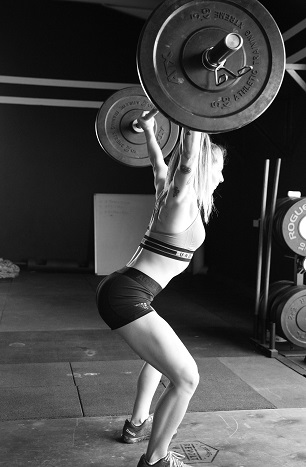Through decades of evolution, today the Olympic lifts are officially two moves: the “clean and jerk” and the “snatch”. Some people confuse “lifting weights” with “weightlifting”. The former refers to lifting any sort of weight such as barbells, dumbbells, kettlebells, etc. The latter refers specifically to the two modern day afore-mentioned Olympic lifts.
Both lifts employ the generation of force against the ground to first elevate and accelerate the barbell upward, then use force against the inertia of the elevated barbell to accelerate the athlete downward and into position to receive the bar (Everett, 2017).
The snatch is a wide-grip, one-move lift. The clean and jerk is a close-grip, two-move lift. In the snatch, the weight is brought from the ground to an overhead position using both hands. The arms lock out overhead in one smooth movement while simultaneously the athlete drops into a rock bottom squat.
The clean portion of the clean and jerk involves bringing the weight to shoulder level in a front rack position. The jerk portion involves quickly dropping under the bar while simultaneously straightening out the arms until the elbows are locked, then standing up with the weight overhead (Randolph, 2015).
In the sport of weightlifting both technique and muscular strength are important. As Everett notes “no amount of technical proficiency will allow a lifter to magically defy the laws of physics; 200 kgs will not suddenly jump from the ground to over a lifter’s head without the application of a great magnitude of muscular force. Likewise, even enormous amounts of strength cannot be applied effectively to the snatch or clean and jerk without reasonable technical proficiency”.
Unfortunately many coaches and trainers poorly teach Olympic lifts which may often lead to injuring the athlete or client. Coaches who are not comfortable with performing or teaching the Olympic lifts, should use medicine balls, kettlebells or plyometric exercises to induce high velocity power development.
My advice: is to leave your ego behind, focus on technique first, and then worry about the weight you put on the bar. Weightlifting needs patience and practice! The objective of weightlifting is not just to move the bar from point A to point B, but to move the bar quickly and in a technically correct manner from point A to point B.
